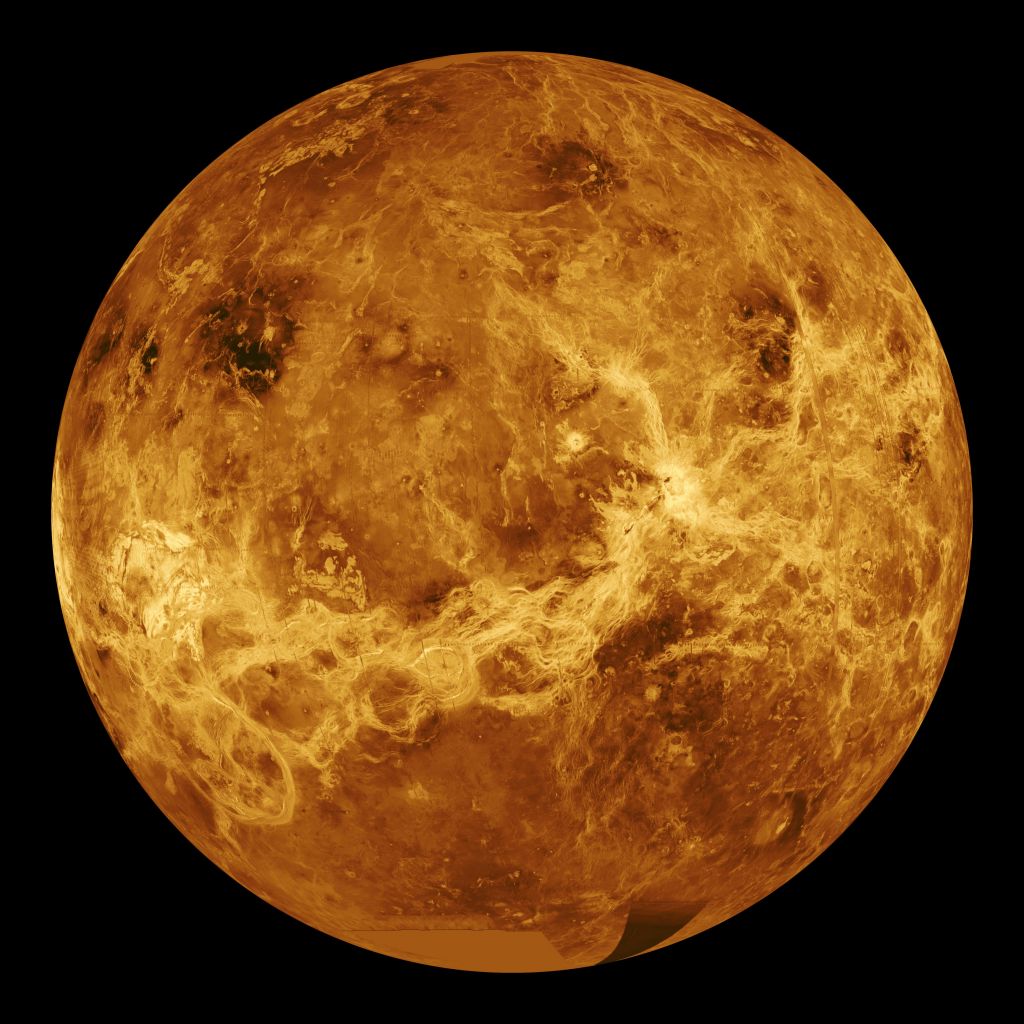
… and I will give them the morning star.
— Revelation 2:28
Venus is almost exactly the same size as Earth. And Uranus is almost exactly the same size as Neptune. That this should happen twice in one star system suggests there's some mechanism in planet formation that tends to breed twins.
Any bright star over the eastern horizon at dawn is a "morning star," and any bright star over the western horizon at dusk is an "evening star," but The Morning Star and The Evening Star is Venus. One of the first accomplishments of astronomy was to realize that the Morning and Evening Stars were the same body, moving from one side of the Sun to the other. Venus is the brightest thing in the sky, after the Sun and Moon, and is often judged the most beautiful.
Accordingly, it was often given to the goddess of love and beauty, whoever that might be in various pantheons: Inanna, Ishtar, Aphrodite, Venus, Frigg. Friday is named for this planet, Frigg's Day, Vendredi in French, Venerdi in Italian.
Copper is the element alchemy associated with Venus, because Venus was the patron goddess of Cypress, the ancient world's main source of copper.
Venus is important in the history of science because Galileo first observed that it went through phases, like the Moon, including full and gibbous phases. For that to happen, Venus had to be on the far side of the Sun from Earth, and that was supposed to be impossible in the old Ptolemaic astronomy.
Venus was a very popular planet in earlier science fiction, where it was almost always pictured as a tropical world. Any natives were likely to be either intelligent dinosaurs or Polynesians In Space. Since Venus is now known to be a hellhole about as inhabitable as a working kiln, modern SF concentrates on schemes to terraform Venus—re-mold it into a habitable world.
Venus is hard to study because of a thick layer of cloud covering the whole planet. The Russians landed the first probes on Venus in 1972. They sent back a few pictures before they died. The Magellan orbiter mapped the planet by radar in 1989.
On to the Earth-Moon System
Back to Mercury
Return to Gallery of Planets
Return to Introduction to Essays
Return to Wind Off the Hilltop
Copyright © Earl Wajenberg, 2012